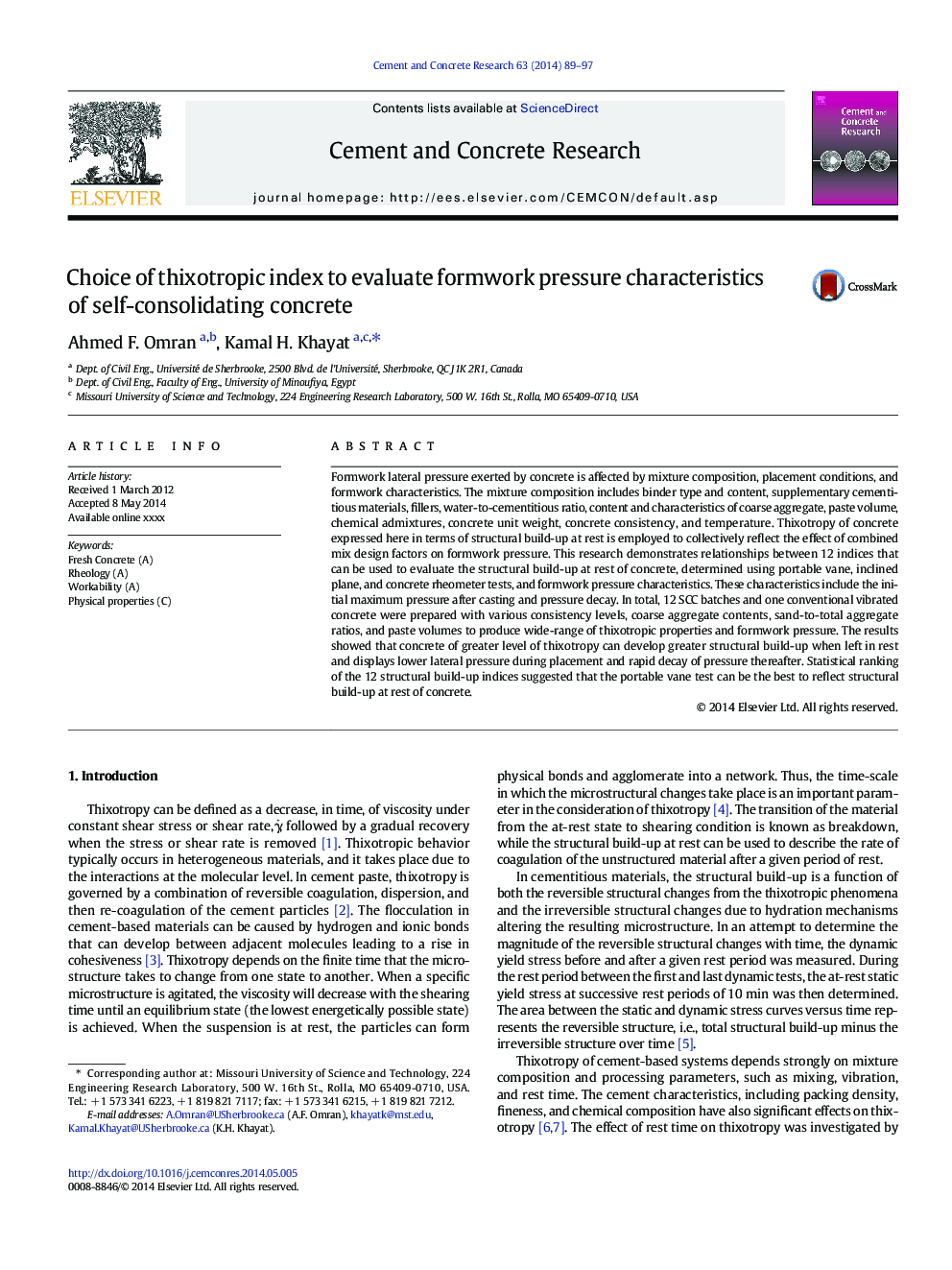| Article ID | Journal | Published Year | Pages | File Type |
|---|---|---|---|---|
| 7885513 | Cement and Concrete Research | 2014 | 9 Pages |
Abstract
Formwork lateral pressure exerted by concrete is affected by mixture composition, placement conditions, and formwork characteristics. The mixture composition includes binder type and content, supplementary cementitious materials, fillers, water-to-cementitious ratio, content and characteristics of coarse aggregate, paste volume, chemical admixtures, concrete unit weight, concrete consistency, and temperature. Thixotropy of concrete expressed here in terms of structural build-up at rest is employed to collectively reflect the effect of combined mix design factors on formwork pressure. This research demonstrates relationships between 12 indices that can be used to evaluate the structural build-up at rest of concrete, determined using portable vane, inclined plane, and concrete rheometer tests, and formwork pressure characteristics. These characteristics include the initial maximum pressure after casting and pressure decay. In total, 12 SCC batches and one conventional vibrated concrete were prepared with various consistency levels, coarse aggregate contents, sand-to-total aggregate ratios, and paste volumes to produce wide-range of thixotropic properties and formwork pressure. The results showed that concrete of greater level of thixotropy can develop greater structural build-up when left in rest and displays lower lateral pressure during placement and rapid decay of pressure thereafter. Statistical ranking of the 12 structural build-up indices suggested that the portable vane test can be the best to reflect structural build-up at rest of concrete.
Related Topics
Physical Sciences and Engineering
Engineering
Industrial and Manufacturing Engineering
Authors
Ahmed F. Omran, Kamal H. Khayat,
